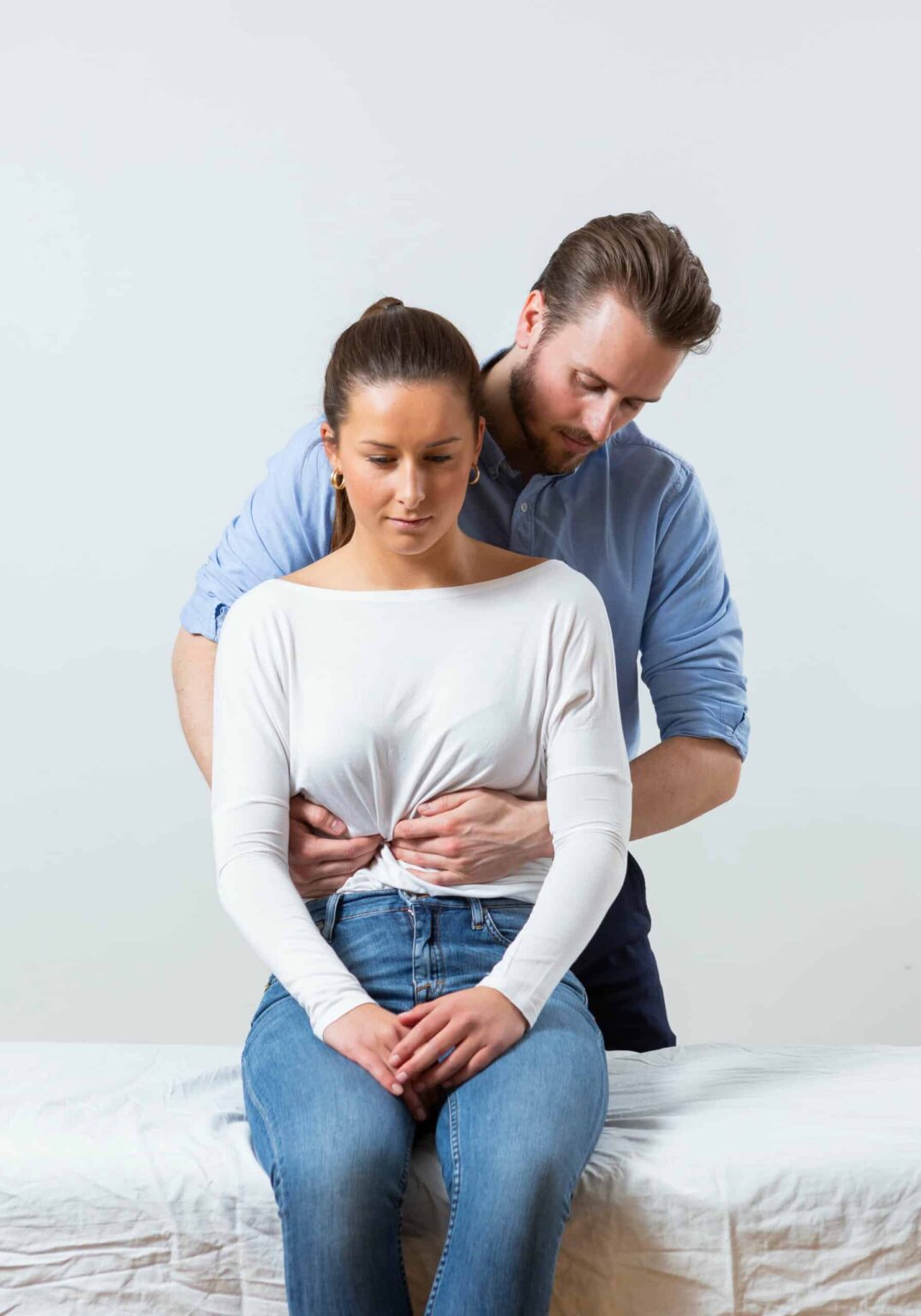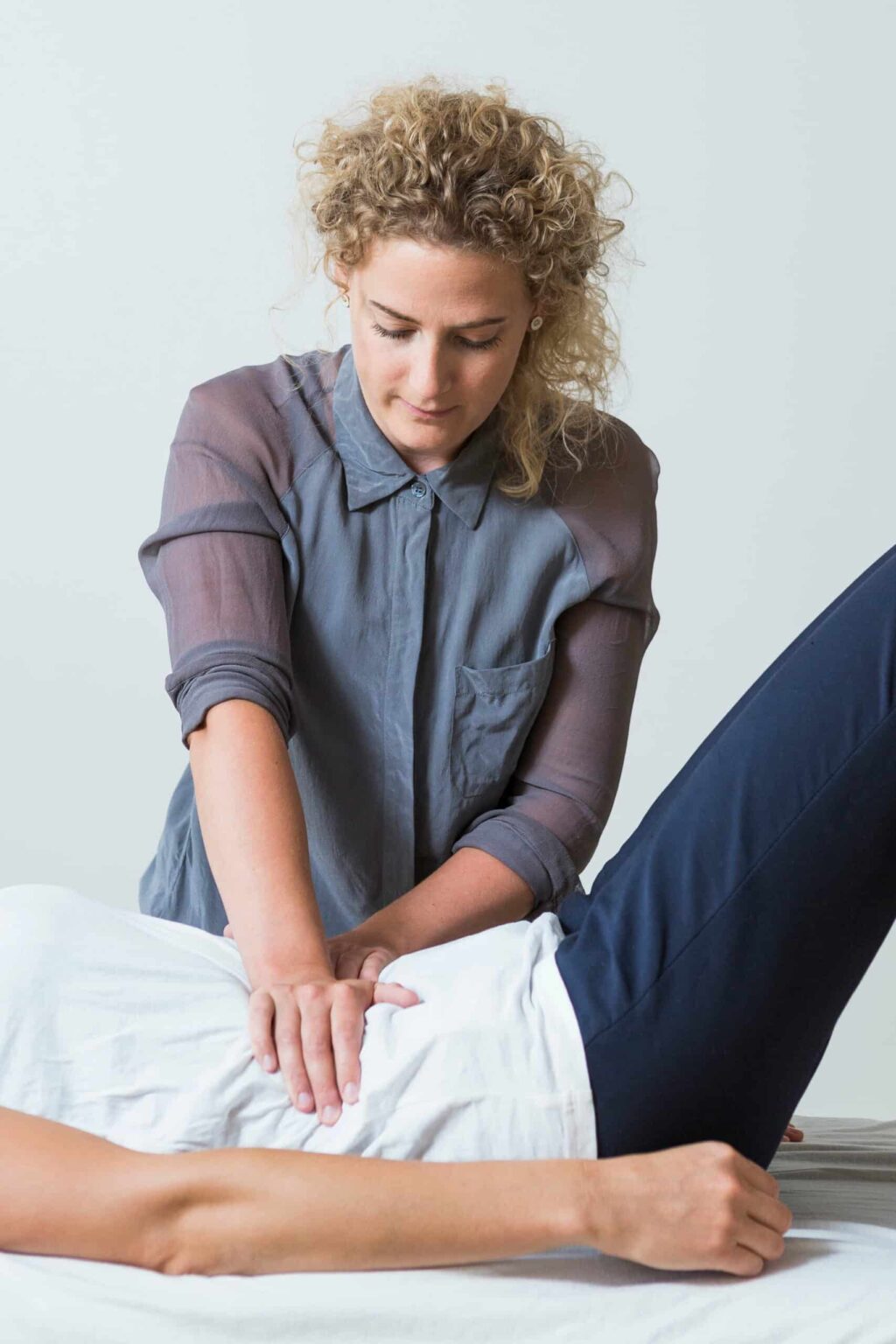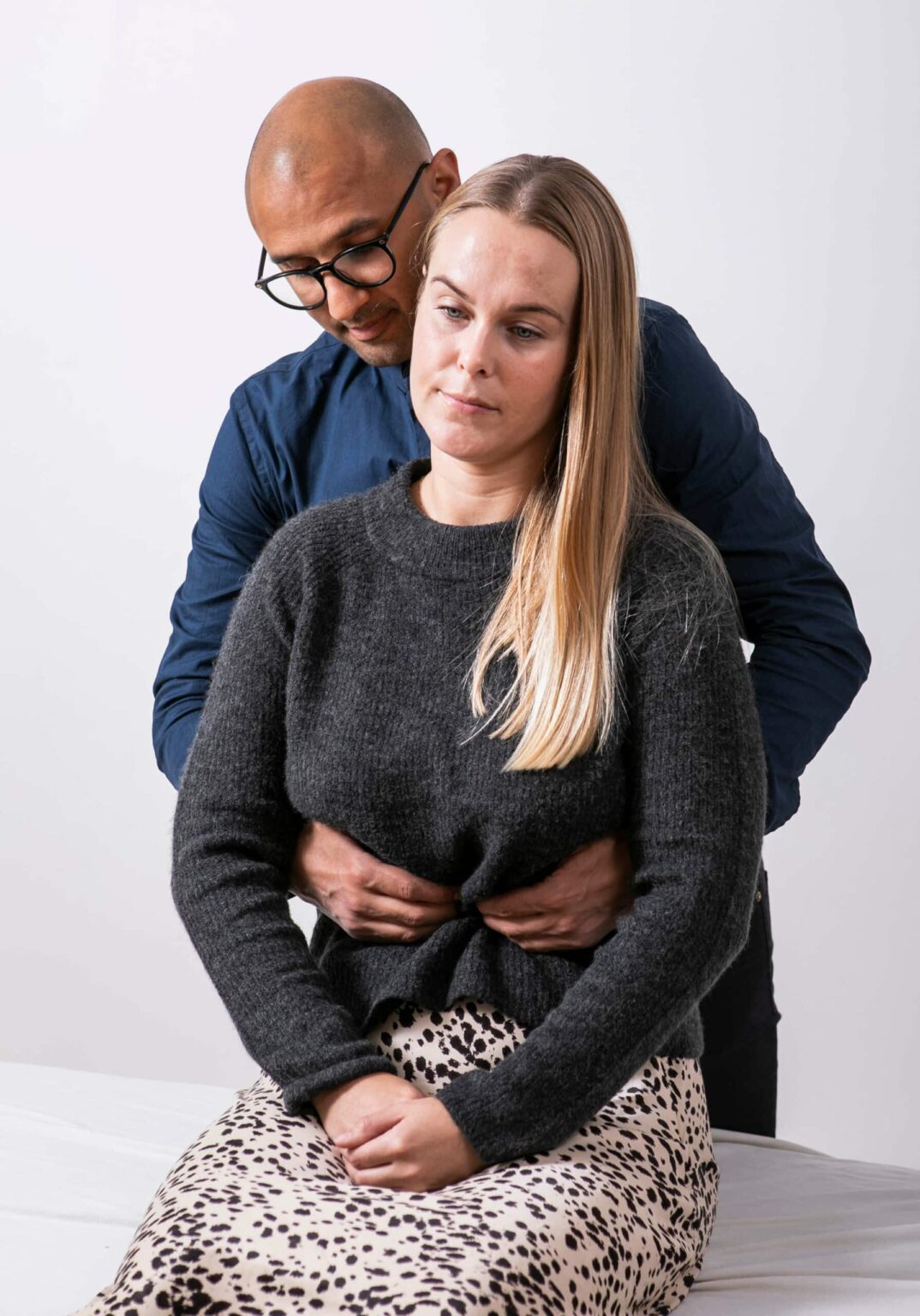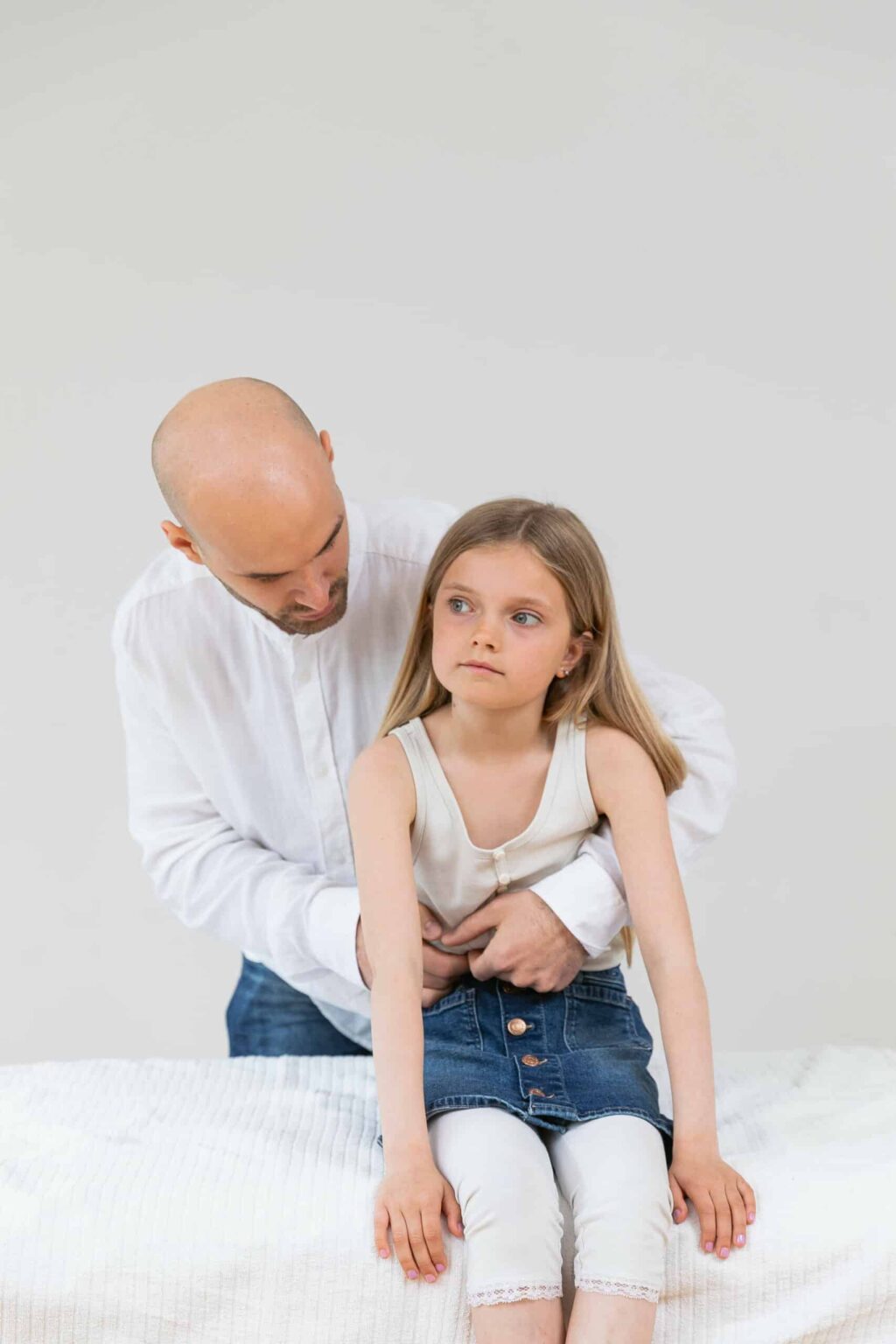We advise on problems from
Appendicitis
Learn more about appendicitis and its treatment
What is appendicitis?
Appendicitis is an acute condition in which the appendix becomes inflamed. The inflammatory condition occurs if the opening between the cecum and the appendix becomes blocked. Causes of appendicitis can include fecal impaction, swelling of the lymph tissue, foreign bodies or tumors that can block passage in the appendix.
The bacteria will accumulate and multiply in the appendix, which will cause an increase in pressure and a reduction in blood circulation. This creates a breeding ground for bacteria to start an infection, whereby the appendix will become inflamed (uncomplicated appendicitis). If left untreated, the condition will progress. The reduced blood circulation will lead to ischemia (lack of oxygen) and weakness in the tissue, where the increasing pressure increase and further inflammation will end up perforating (bursting) the appendix (complicated appendicitis).
Jump to section [Vis]
What is the appendix?
The appendix is located in the lower right part of the abdomen. It is a small, finger-shaped organ that extends from the first part of the large intestine (caecum). The appendix can vary greatly in size from person to person, but is typically 7-10 cm long.
Anatomically, it forms a small pouch that contains lymphoid tissue (tissue with white blood cells) and enterobacteria (intestinal bacteria). The appendix is thought to have no function in modern humans, as it has evolved into an unnecessary organ for the survival of the human body.
Source: Sundhed.dk
Symptoms and signs of appendicitis
The symptoms of appendicitis develop relatively quickly (within 1-2 days), and the most central symptom is the development of the pain pattern. The condition typically starts with abdominal pain in the midline diffusely localized around the navel (visceral pain). Over the next 12 hours, the pain will migrate downward and to the right to a point called McBurney’s point. The pain will intensify and become more specifically localized (somatic pain) due to the worsening of the inflammatory process.
Accompanying symptoms that may be experienced with appendicitis are reduced or lost appetite, as well as nausea, vomiting, or in some cases diarrhea. Due to inflammation, mild fever, chills, and general malaise may also be experienced.
Symptoms of appendicitis that you should pay attention to:
- Abdominal pain diffuse around the navel
- Localized severe pain in the lower right abdomen
- Nausea (after onset of stomach pain)
- Vomiting (after onset of abdominal pain)
- Reduced or lost appetite (after onset of stomach pain)
- Fever and chills (signs of inflammation)
- Diarrhea (more rare symptom)
- Greater urge to urinate (as a possibly full bladder will press on the appendix)
- General malaise.

How is appendicitis diagnosed?
In addition to the presence of the above symptoms, a physical examination may be supplemented with some tests that could indicate suspicion of appendicitis:
- Pain provocation by pressure on McBurney’s point, which intensifies by quickly releasing the pressure (Rebound test)
- Intensification of pain at McBurney’s point when pressure is applied to the lower left abdomen (Rovsing’s sign).
- Intensification of pain at McBurney’s point during passive posterior extension or internal rotation of the right hip, as the hip muscles will be pressed against the inflamed appendix (psoas and obturator signs).
The presence of multiple findings simultaneously provides greater clinical precision.
Diagnosis is based on the clinical presentation, as described above, and elevated inflammatory markers. Often a CT scan or ultrasound scan will be used to support the hypothesis.
Source: Sundhed.dk
Treatment of appendicitis
In the case of uncomplicated appendicitis, conservative treatment with antibiotics may be sufficient. Surgical treatment is most often chosen because the risk of recurrence (return) is high. In the case of recurrent, repeated inflammation of the appendix, it can be described as chronic appendicitis, where the same symptoms may return but in a milder form. In the case of complicated appendicitis, surgical treatment is inevitable.
The consequences of untreated appendicitis and especially ruptured appendicitis are that small collections of pus can occur in small pockets (abscesses) in the abdominal cavity. If bacteria, fecal matter and infectious material instead spread to the entire abdominal cavity, the consequence will be peritonitis. In severe but rare cases, untreated appendicitis can develop into sepsis (blood poisoning).

Removal of the appendix (Appendectomy): laparoscopic surgery or open surgery?
The appendix is surgically removed by appendectomy. The operation is performed in the vast majority of cases as a laparoscopy. This operation is associated with few risks and a quick recovery time. Resumption of normal daily life and exercise habits can be resumed immediately. Early mobilization is associated with a lower risk of complications, infections and fatigue.
If, in rare cases, the appendix cannot be removed by laparoscopic surgery, it may be necessary to change the procedure to open surgery (laparotomy). Here, a larger incision will be made through the skin so that the appendix can be accessed directly. This surgery will take longer to heal, with more restrictions for the first few weeks. A larger amount of scar tissue will also form, which could later cause problems in the form of pain, tightness and reduced mobility in the area.
Source: Region Midtjylland
Prevention and advice to avoid appendicitis
There is no strong causal relationship for the development of appendicitis. In some cases, the condition occurs without any cause at all. Lifestyle, gastrointestinal function and family history of disease, including gastrointestinal diseases, are considered to play a role in the risk of developing appendicitis.
Here are some general tips and measures that can reduce the risk of developing appendicitis:
- Eat a high-fiber diet – consuming dietary fiber contributes to good gastrointestinal function. The recommended intake of dietary fiber is 25-35g daily, according to the Danish Health Authority’s recommendations. Dietary fiber is found, for example, in whole grain products, fruit, nuts, seeds, vegetables and legumes.
- Remember to drink fluids – Adequate fluid intake is important for a good digestive rhythm. Imbalance in intake can lead to a hard stomach and constipation (too little fluid) or a thin stomach and frequent toilet visits (too much fluid). The recommended intake is 1.5 L of water per day, according to the Danish Health Authority’s recommendations.
- Regular physical activity – Exercise and physical activity help stimulate the natural movement of the intestines, which promotes the digestive process and can prevent constipation.
- Avoid smoking – Smoking has several negative effects on the entire digestive system. Avoiding smoking promotes the overall health of the digestive system.
- Limit alcohol intake – Excessive alcohol intake, like smoking, has negative effects on the entire digestive system. Limiting intake promotes the overall health of the digestive system. Weekly intake should not exceed 10 units for both men and women.
- Good hygiene – Maintaining good hygiene limits the risk of infections that could potentially lead to appendicitis.

Often related pain

Side stitch

Hidden constipation

Urinary incontinence

Celiac disease

Ulcer

Hernia

Lactose intolerance

